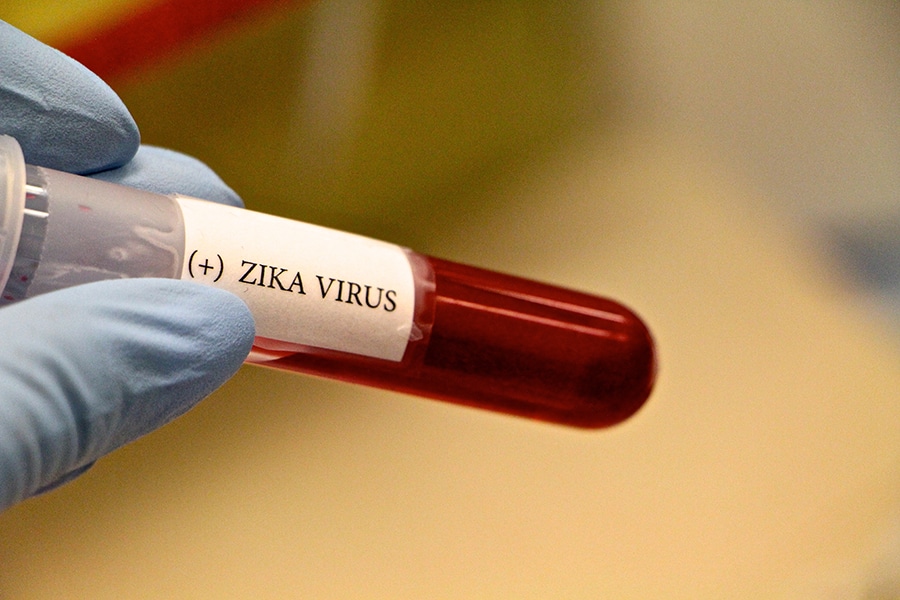Posted on April 4, 2019 in ASRC News, Featured News, Nanoscience Initiative
The finding might also have application in developing anti-parasite, anti-cancer and antibacterial treatments

“Our molecules are more potent than almost anything currently being used against Zika,” said ASRC and Hunter College Chemistry Professor Adam Braunschweig, whose lab is conducting the work. “They are very potent, have low cell toxicity, and have the potential to be used for Zika treatment and detection.”
All viruses and eukaryotic cells, which include plant and animal cells, have carbohydrates attached to their surfaces. The carbohydrates act like ID tags, helping cells recognize each other via carbohydrate receptors. This same method helps viruses gain entry into cells. In the new study, the researchers found a way to block this interaction.
The researchers created synthetic carbohydrate receptors, testing their anti-Zika activity in Vero cells and HeLa cells. In both cases, the molecules proved highly potent. The receptors likely fight the infection in one of two ways, says Braunschweig. They either bind to the carbohydrates on the cells’ surfaces, or they bind those of the virus. Either way, the virus would be blocked from communicating with and entering the cells.
Synthetic carbohydrate receptors are not often useful because they are not very discriminating in what they choose to bind. In this study, however, the researchers created highly effective receptors by mimicking the binding approach of naturally occurring receptors. In addition to the potential for treating Zika, the strategy of using synthetic receptors also has anti-cancer, anti-parasite, and antibacterial potential.
A next step in the researchers’ search for an effective Zika treatment will be to create a second generation of molecules by using the chemical intuition gained in this study to modify the structures and make them even more effective. Eventually, the team would like to test the molecules’ therapeutic potential in animal trials.
###
Organizational Attribution
Our correct name is the Advanced Science Research Center at The Graduate Center of The City University of New York. For the purpose of space, Advanced Science Research Center, GC/CUNY is acceptable. On second reference, ASRC is correct.
About the Advanced Science Research Center
The ASRC at The Graduate Center elevates scientific research and education at CUNY and beyond through initiatives in five distinctive, but increasingly interconnected disciplines: environmental sciences, nanoscience, neuroscience, photonics, and structural biology. The ASRC promotes a collaborative, interdisciplinary research culture with renowned researchers from each of the initiatives working side-by-side in the ASRC’s core facilities, sharing equipment that is among the most advanced available.
About The Graduate Center of The City University of New York
The Graduate Center of The City University of New York (CUNY) is a leader in public graduate education devoted to enhancing the public good through pioneering research, serious learning, and reasoned debate. The Graduate Center offers ambitious students more than 40 doctoral and master’s programs of the highest caliber, taught by top faculty from throughout CUNY — the nation’s largest public urban university. Through its nearly 40 centers, institutes, and initiatives, including its Advanced Science Research Center (ASRC), The Graduate Center influences public policy and discourse and shapes innovation. The Graduate Center’s extensive public programs make it a home for culture and conversation.
###
